Do you have vinyl plank flooring that is buckling? There are a few things you can do to try and fix it. In this blog post, we’ll discuss what might be causing your flooring to buckle and how to fix vinyl plank flooring buckling. We’ll also give you tips on preventing your vinyl plank flooring from buckling in the future. Hopefully, this information will help you keep your flooring looking beautiful for years!
Summary: If your vinyl plank flooring is buckling, there are a few things you can do to fix it. First, make sure the floor is level and square. If it is not, the buckling will be worse. Second, use a level to check the plank edges for evenness. If they are not level, the floor will buckle more. Third, use a hammer and nails to secure the plank edges together. Finally, use a caulking gun and sealant to finish the job.
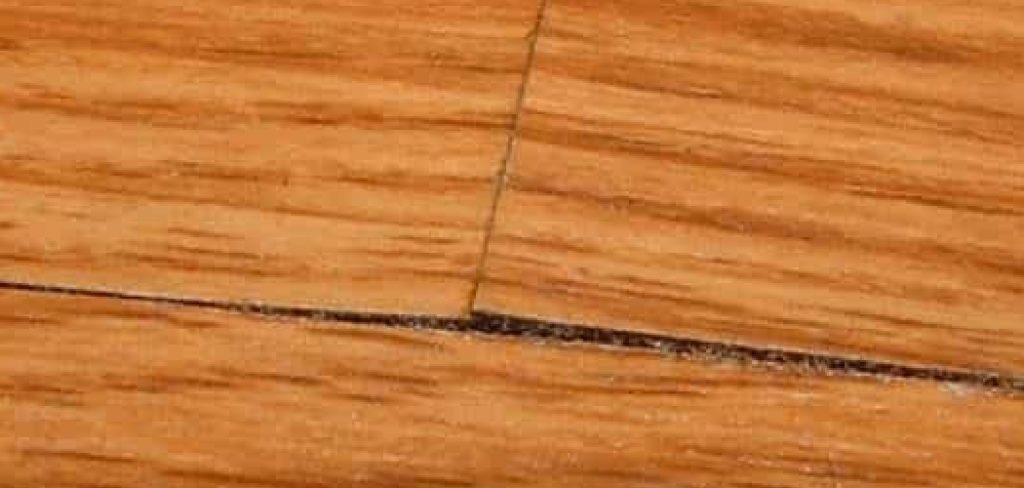
What Is a Vinyl Plank Floor?
Vinyl plank flooring is a type of flooring that consists of planks made from vinyl. Vinyl is a synthetic material that is resistant to water and wear, making it an ideal choice for flooring. Vinyl plank flooring is available in a wide range of colors and styles, making it easy to find a look that suits your home.
Vinyl plank flooring is a versatile and affordable flooring option that can be used in any room of your home. It is easy to install and easy to care for, making it a great choice for busy families or those on a budget. If you are looking for a stylish and easy-to-care-for flooring option, vinyl plank flooring may be perfect for you.
Why It’s Important to Fix Vinyl Plank Flooring Buckling?
Buckling is a problem that can affect vinyl plank flooring, and if not corrected, can cause the planks to become loose and eventually come apart. In extreme cases, it can even lead to structural damage. While buckling is most often caused by excessive moisture, it can also be caused by flooring that has been installed over an uneven surface. If you are experiencing buckling, it is important to consult with a professional to assess the cause and correct the issue.
Regardless of the cause, it is important to take action as soon as possible to prevent further damage. The first step is to identify the source of the problem and correct it. For example, if the problem is due to excessive moisture, you’ll need to take steps to dry out the area and improve air circulation. In some cases, you may also need to replace damaged sections of flooring.
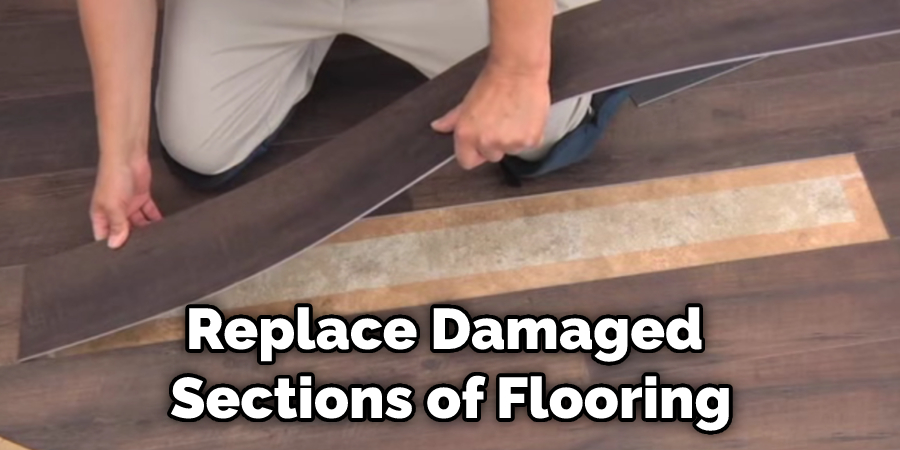
If the problem is due to an uneven surface, you’ll need to level the floor before proceeding with the installation. By taking these steps, you can fix vinyl plank flooring buckling and prevent further damage.
7 Causes Vinyl Plank Flooring to Buckle?
1. Poor Installation
If your vinyl plank flooring is not installed properly, it may start to buckle and lift from the subfloor. Make sure you hire a professional to install your flooring to avoid this issue. Floating Floors: Floating floors are vinyl planks that click together. The advantage of this is that you can install floating floors by yourself. Most people don’t have problems with them, but if the plank isn’t installed properly, it could start to separate.
2. Water Damage
If your floor is exposed to too much water, it can cause the planks to swell and eventually buckle. To avoid this, wipe up any spills immediately and keep your floor dry.
3. Temperature Changes
If the temperature in your home fluctuates frequently, it can cause your vinyl plank flooring to buckle. Try to keep a consistent temperature in your home to avoid this issue.
4. The Condition Of The Subfloor
If the subfloor is not level or in good condition, it can cause your vinyl plank flooring to buckle. Make sure that the subfloor is level and in good condition before installing vinyl plank flooring.
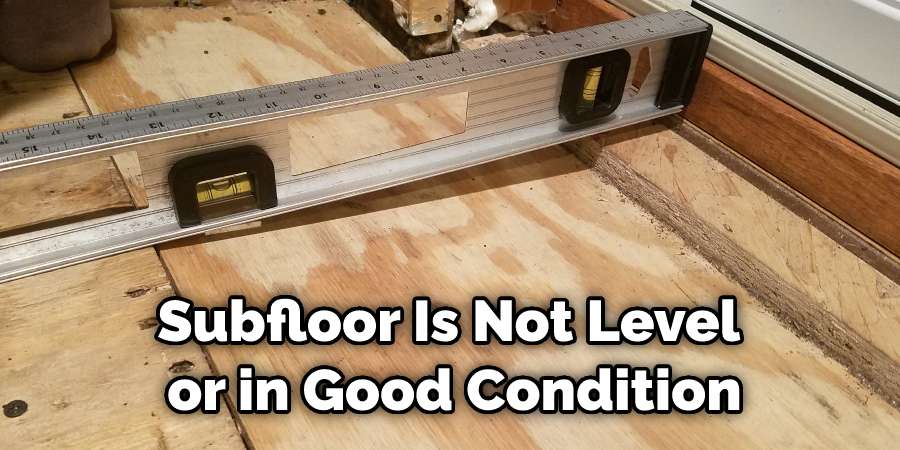
5. Moisture Trapped Underneath The Planks
If moisture is trapped underneath the vinyl plank flooring, it can cause the planks to swell and eventually buckle. To avoid this, ensure the area under the floor is well ventilated.
6. Using Low-Quality Adhesive
If you use a low-quality adhesive to install your vinyl plank flooring, it may not properly hold the planks in place. This can cause the planks to shift and eventually buckle. Make sure to use a high-quality adhesive to avoid this issue.
7. Not Acclimating The Flooring
If you do not acclimate the vinyl plank flooring to the temperature and humidity of your home, it can cause the planks to buckle. Make sure to acclimate the flooring before you install it.
7 Tips to Follow on How to Fix Vinyl Plank Flooring Buckling
If your vinyl plank flooring is buckling, it’s important to take care of the problem right away. Buckling can occur for various reasons, but most commonly, it’s due to moisture or temperature changes. These can cause the planks to warp and eventually buckle.
Here are a few tips on how to fix vinyl plank flooring buckling:
1. Inspect the Flooring for Any Damage
Before you start trying to fix the buckling, it’s important to check the vinyl plank flooring for any damage. If there are damaged boards, they will need to be replaced before you proceed with the other steps.
2. Check for Moisture
One of the most common causes of buckling is moisture. If the room where the flooring is installed is prone to condensation or if there was a recent spill, the flooring could start to buckle. Use a moisture meter to check the subfloor and make sure that it is dry. If the subfloor is wet, you must dry it before proceeding.
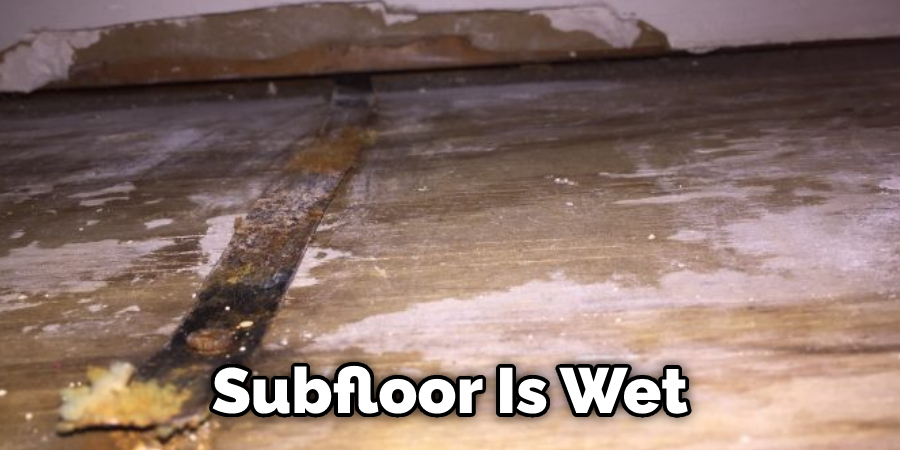
3. Inspect the Subfloor
In some cases, the subfloor itself could be the cause of the problem. If the subfloor is not level or if it is not properly attached to the joists, the flooring could start to buckle. Use a level to check the subfloor and make sure that it is level. You may also need to add additional support to the subfloor if it is not properly attached.
4. Use Support Blocks
If the flooring is buckling in one particular area, you may be able to fix the problem by adding support blocks. Support blocks are pieces of wood placed under the edges of the planks to keep them level. You can find support blocks at most hardware stores.
5. Try to Repair the Damage
If the damage is minor, you may be able to repair it yourself. Start by cleaning the area well with a mild soap and water solution. Next, use a putty knife to fill any gouges or chips with vinyl filler. Be sure to match the color of the filler to your flooring. Once the filler is dry, you can sand it down, so it’s level with the rest of the floor.
If the damage is more significant, you may need to replace the affected planks. To do this, start by removing the damaged plank and then measuring the space so you can cut a new plank to size.
Be sure to use a sharp utility knife or saw to get a clean cut. Once the new plank is in place, you can use a putty knife to fill in any gaps and then sand the area, so it’s flush with the rest of the floor.
6. Prevent Future Damage
Once you’ve fixed the damage, it’s important to take steps to prevent it from happening again. For example, use a dehumidifier to keep the air dry if the flooring is in a room prone to condensation. And be sure to wipe up any spills right away.
You should also avoid putting heavy objects on the flooring, as this can cause the planks to buckle. If you do need to put something heavy on the floor, use a piece of plywood or another board to distribute the weight evenly.
7. Call a Professional
If you’re still having problems with your flooring, or if the damage is too extensive to repair yourself, you may need to call a professional. A flooring contractor can assess the damage and determine the best course of action. They may also be able to install new planks or even replace the entire floor if necessary.
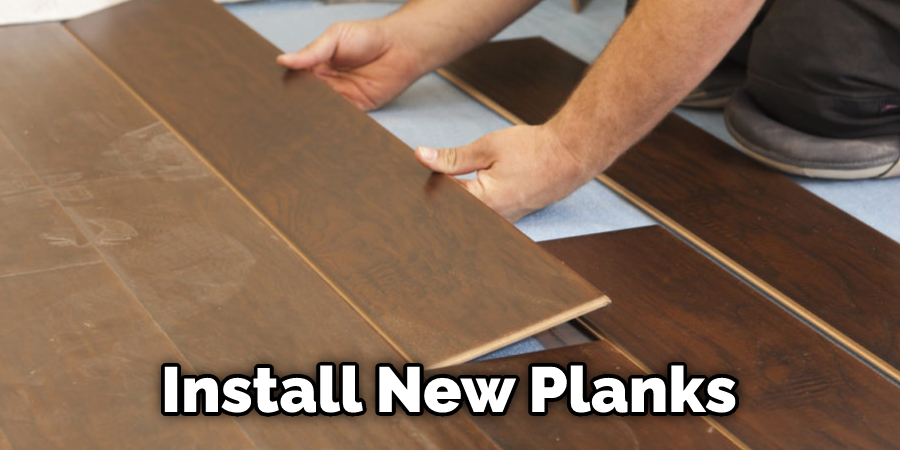
That’s it! You’ve now learned how to fix vinyl plank flooring buckling. By following these steps, you can keep your flooring looking great for years.
How to Identify Buckling in Your Vinyl Plank Flooring
Vinyl plank flooring is a popular choice for many homeowners because it is durable, easy to care for, and economical. However, like all types of flooring, vinyl plank flooring can suffer from wear and tear over time.
One problem is buckling, which happens when the planks become loose or warped. If you suspect that your vinyl plank flooring is beginning to buckle, there are a few things you can look for.
First, check to see if the planks are starting to lift at the edges. If they are, the adhesive holding them in place is likely failing. Another sign of buckling is gaps between the planks.
If you notice any of these problems, it’s important to contact a qualified flooring contractor as soon as possible to assess the damage and determine the best course of action. Left unchecked, buckling vinyl plank flooring can lead to more serious damage, such as water damage or mold growth.
The Best Way to Prevent Vinyl Plank Flooring from Buckling
Vinyl plank flooring is a popular choice for many reasons. It’s beautiful, durable, and easy to install. However, vinyl plank flooring can also be susceptible to buckling if it’s not installed properly. Buckling occurs when the planks push against each other, causing the sides to bow out. This can happen if the planks are installed too tightly or the subfloor isn’t level.
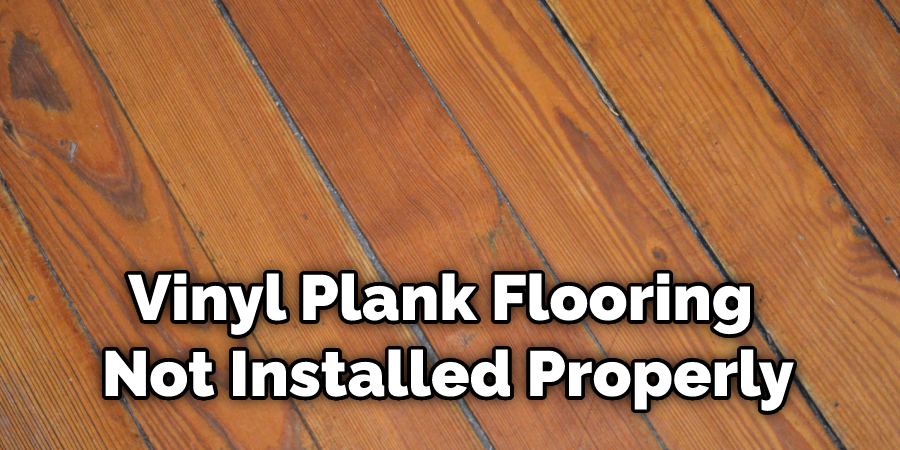
Thankfully, you can do a few things to prevent your vinyl plank flooring from buckling. First, make sure that you leave enough space between the planks during installation. Second, check that the subfloor is level before you begin the installation.
Third, use a moisture barrier between the subfloor and the vinyl plank flooring. By following these simple tips, you can prevent your vinyl plank flooring from buckling and enjoy a beautiful, durable floor for years to come.
Is There a Way to Fix Warped Vinyl Plank Flooring?
Warped vinyl plank flooring is a problem that can be caused by many things, from water damage to the inadequate installation. While trying to fix the problem yourself may be tempting, warped vinyl plank flooring is best left to the professionals. Not only do they have the experience and expertise to fix the problem, but they also have the proper tools and equipment to do the job right.
In most cases, warped vinyl plank flooring can be repaired by sanding down the affected area and then re-laying the planks. However, in some cases, the damage may be too severe, and the entire floor will need to be replaced. Whichever course of action is taken, it’s important to get professional help when dealing with warped vinyl plank flooring. Otherwise, you may end up making the problem worse.
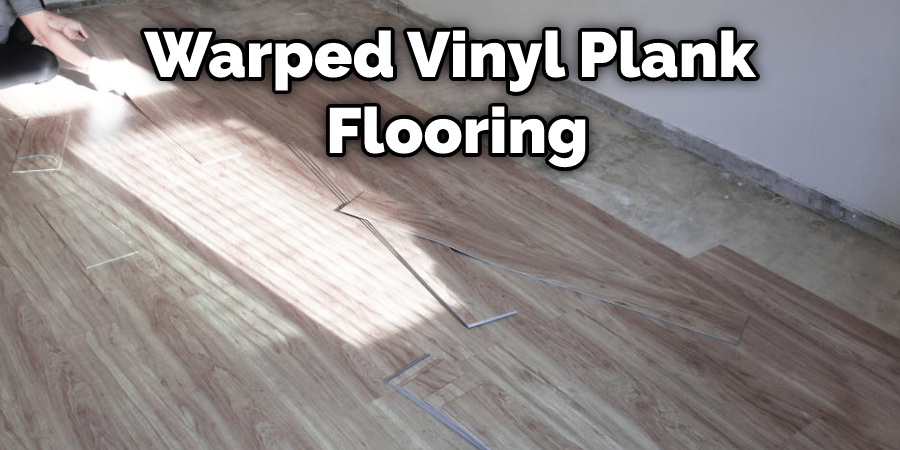
What Are Some Alternatives to Fixing Vinyl Plank Flooring when It Buckles?
There are several reasons why your vinyl plank flooring may start to buckle. Most often, it is due to changes in temperature or humidity. For example, if you live in an area with high humidity, your flooring may start to warp as it absorbs moisture from the air. Similarly, the flooring can contract or expand if there are sudden temperature changes, causing it to buckle.
If you notice that your flooring is starting to buckle, there are a few things you can do to fix the problem. One option is to use a floor jack to lift the warping boards and re-secure them. Another option is to remove the affected boards and replace them with new ones. In some cases, you may also need to install a vapor barrier to prevent further moisture damage.
With a little effort, you can fix your buckling floor and keep your vinyl plank flooring looking great for years to come.
The Benefits of Vinyl Plank Flooring Over Other Types of Flooring
There are many benefits of vinyl plank flooring over other types of flooring. It is more durable, easy to install, and easy to clean. Additionally, it is more scratch-resistant than other floorings, making it ideal for homes with pets or children.
It is also water-resistant, making it ideal for bathrooms or kitchens. Overall, vinyl plank flooring is a versatile and durable option that can suit various needs.
Conclusion
If your vinyl plank flooring is buckling, don’t panic. There are several ways to fix the issue and make your floors look new. In this blog post, we’ve outlined four methods for fixing buckled vinyl planks. So choose the method that best suits your needs and get started repairing those floors today! Thanks for reading our post about how to fix vinyl plank flooring buckling.
